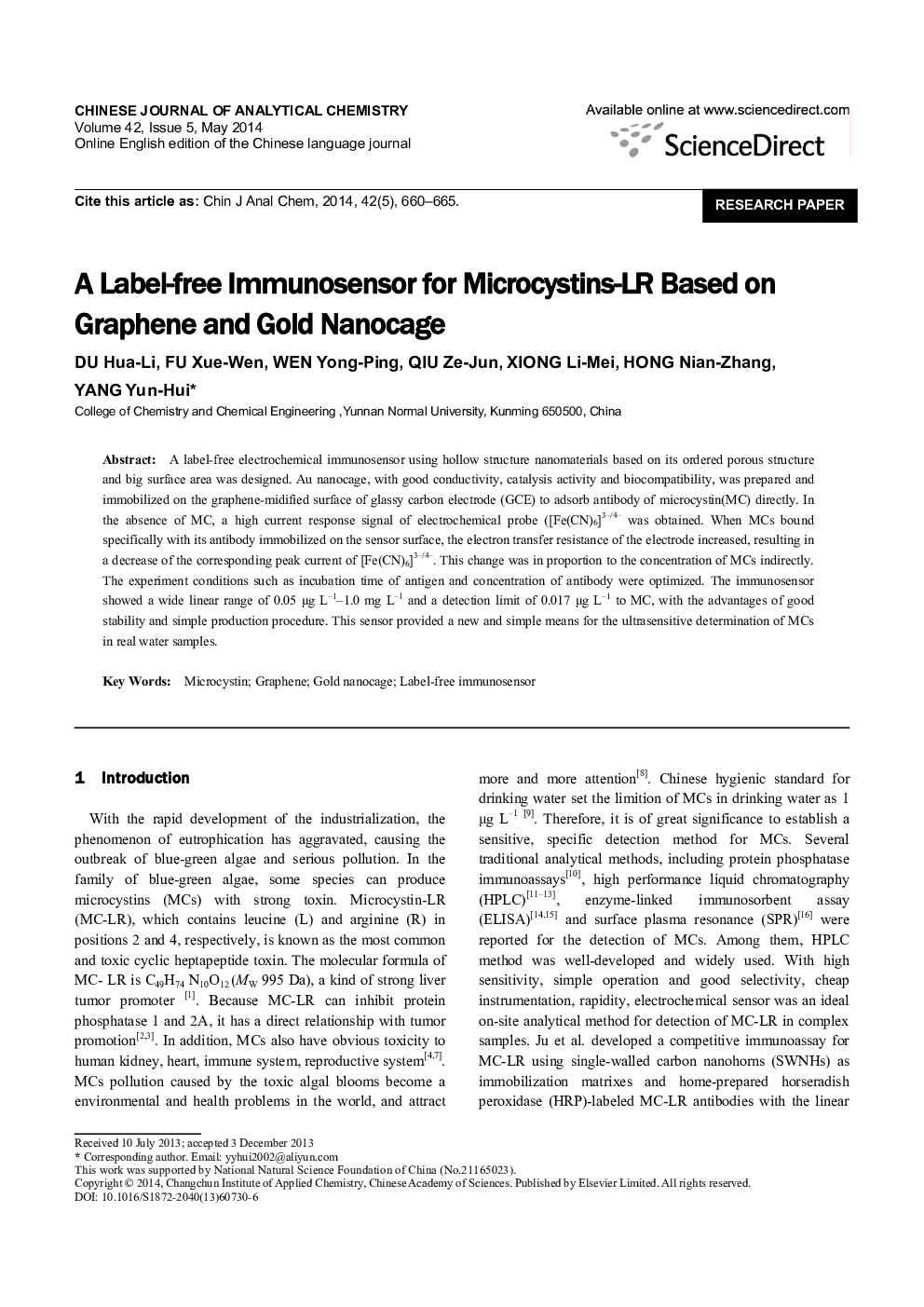| Article ID | Journal | Published Year | Pages | File Type |
|---|---|---|---|---|
| 1182173 | Chinese Journal of Analytical Chemistry | 2014 | 6 Pages |
A label-free electrochemical immunosensor using hollow structure nanomaterials based on its ordered porous structure and big surface area was designed. Au nanocage, with good conductivity, catalysis activity and biocompatibility, was prepared and immobilized on the graphene-midified surface of glassy carbon electrode (GCE) to adsorb antibody of microcystin(MC) directly. In the absence of MC, a high current response signal of electrochemical probe ([Fe(CN)6]3−/4− was obtained. When MCs bound specifically with its antibody immobilized on the sensor surface, the electron transfer resistance of the electrode increased, resulting in a decrease of the corresponding peak current of [Fe(CN)6]3−/4−. This change was in proportion to the concentration of MCs indirectly. The experiment conditions such as incubation time of antigen and concentration of antibody were optimized. The immunosensor showed a wide linear range of 0.05 μg L−1−1.0 mg L−1 and a detection limit of 0.017 μg L−1 to MC, with the advantages of good stability and simple production procedure. This sensor provided a new and simple means for the ultrasensitive determination of MCs in real water samples.
Graphical AbstractAu nanocage with good conductivity, catalysis activity and biocompatibility, was prepared and modified on the surface of GCE with the aid of graphene to immobilize antibody of MC-LR directly. A label-free electrochemical immunosensor was prepared for the sensitive detection of MC-LR using Fe(CN)63−/4− as electrochemical probe.Figure optionsDownload full-size imageDownload as PowerPoint slide
